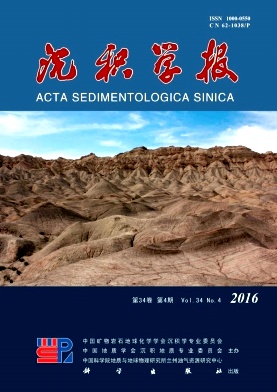Simulations of Coastal Sediment Patterns during the Late Pleistocene in Jiangsu Coasts
doi: 10.14027/j.cnki.cjxb.2016.04.007
- Received Date: 2015-07-09
- Rev Recd Date: 2015-11-27
- Publish Date: 2016-08-10
-
Key words:
- climatic glaciation /
- sedimentation /
- sea level /
- river sediment transport /
- coast-estuary /
- geographical distribution /
- numeric modeling
Abstract: There had been a coastal plain in a continental shelf of the Yellow Sea during the late Pleistocene, on which filled abundant terrestrial-sourced sediments under transportation and deposition of ancient Yangtze River and Yellow River. The South Yellow Sea Radial Sand Ridges, the Yangtze River Deltas and the abandoned Yellow River Deltas were developed on the sediment system. However the evolution patterns and mechanisms are hardly understood if only based on discrete evidence from geological cores. To recognize key issues on the glaciation sea levels and costal sedimentation changes, on the basis of hydrology, sedimentology, and geomorphologic elevations, this study attemptes to construct a numeric model to simulate the changes in the processes and patterns. The model is constructed in two modules:one submodel is built for the glacial-driven sea level and post-tectonic and sediment compaction-impacted relative sea level. The other submodel is for coastal sedimentation under varied sea levels and with river mud-transportation. Three coastal types in the South Yellow Sea radial sand ridges, the Yangtze River deltas and the abandoned Yellow River deltas were prescribed, and the Holocene boundaries of coastal lines that were reconstructed by geological evidence were also prescribed. The model was run by glaciation and climate forces of the late Pleistocene, and simulated the patterns and processes of sea levels, coastal lines and coastal-estuaries sediment flux since 140 ka B.P., 40 ka B.P. and 10 ka B.P. respectively. The results showed that seal levels were the lowest in 19 ka B.P. when it was during the last maximum glaciation, which inland lakes were formed between continental coasts and the Ryukyu Islands. During the late glaciation ca.14 ka B.P., the sea level started to rise and the inland lakes were formed in sea areas of the Yellow Sea. Between the early Holocene and the mid-Holocene, the sea transgression was occurred to the low plains of Jiangsu, and the coastal lines arrived the west to Fangong Dam, ca 6ka B.P.. Furthermore effects of the climatic glacial, tectonic subsiding and sediment compaction were analyzed and results showed that the changes were responded to long-term climate variations, sea-land surface interaction, and terrestrial sediment transportations. The simulations are consistent with geological sequence and strata depths, which the simulation of the relative sea-levels are between -30.2~-23.7 m a.s.l. The simulation errors in varying localities are between ±(2.5~4.5) m, suggesting that the error bar is relative small and the modeling results can be accepted. The study is of significance to understand the characteristics of sedimentation and patterns under multiple complex land-sea interactions and to illustrate the climate and glacial mechanisms for changes in Jiangsu coasts and sediments since the late Pleistocene.
| Citation: | YU Ge, YE LiangTao, LIAO MengNa. Simulations of Coastal Sediment Patterns during the Late Pleistocene in Jiangsu Coasts[J]. Acta Sedimentologica Sinica, 2016, 34(4): 670-678. doi: 10.14027/j.cnki.cjxb.2016.04.007 |






 DownLoad:
DownLoad: